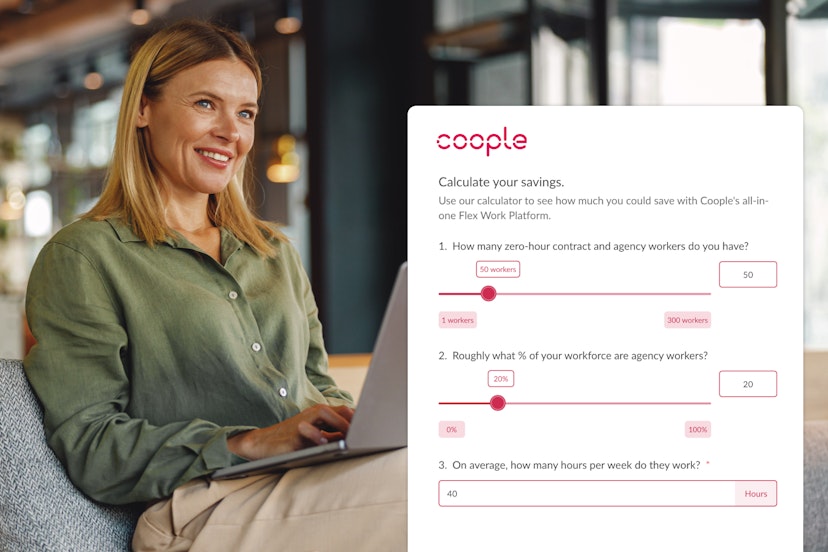
Coople is now offline from 1 Jan 2026. If you need support with existing shifts or any outstanding queries, please visit our help centre or get in touch. All outstanding Coople shifts will be paid and settled.Existing client login

It’s the middle of a busy week, and your busiest sites are already struggling. Orders are piling up, customers are waiting longer than usual, and your managers are scrambling. They need to cover gaps while juggling multiple spreadsheets, agency contacts, and last-minute shift swaps. Every unfilled shift means lost revenue, frustrated staff, and rising overtime costs.
Sound familiar?
One missing worker at a single location might seem minor, but when repeated across several units, the impact quickly spirals.
Managers are stretched thin, service quality drops, and decision-makers like you face tough questions: how can we maintain standards without burning out our teams or overspending?
This is the reality of reactive workforce management, but it doesn’t have to be this way.
At its simplest, a shift planner is a tool to schedule and organise your workforce more efficiently. Traditional planners can centralise shifts, track availability, and reduce errors compared to spreadsheets.
But only Coople goes further.
Alongside visibility and control over your internal and flexible staff, Coople gives you direct access to its own pool of vetted, flexible employees - Cooplers. Unlike agency models, Coople is the legal employer and takes care of all compliance and admin, so you simply pay for the hours worked.
With that foundation in place, here are five strategies to turn your shift planner into a driver of workforce resilience and flexibility.
A shift planner is a tool to help you standardise, streamline, and strengthen your flexible workforce. By adopting a more strategic approach, decision-makers can reduce last-minute firefighting and build a workforce that adapts to changing demands.
Here’s a step by step guide.
The first step is bringing all flexible workforce scheduling into a single platform.
This means planning shifts for flexible workers from your own network, payrolled workers, and agency workers in one place. When demand changes, whether due to seasonal peaks, absences, or sudden spikes in customer orders, managers can make updates instantly.
Eliminating reliance on spreadsheets or disconnected systems ensures shifts are filled accurately and consistently, freeing managers to focus on leadership rather than logistics.
Most shift planners allow you to build and organise pools of workers based on availability, skills, and past performance. This improves speed and accuracy when filling shifts.
But Coople takes this further: instead of only managing the workers you already have, our Flex Work Platform gives you immediate access to thousands of Cooplers - flexible workers already employed by us. That means no delays negotiating with agencies, no compliance headaches, and no gaps left unfilled. You simply post shifts, and the right workers apply.
This unique model ensures your workforce isn’t just organised, but expandable on demand, giving you resilience that traditional shift planners can’t match.
Beyond scheduling, a shift planner provides visibility across your entire operation. Managers can track staffing levels, shift history and worker performance.
These insights make it easier to anticipate gaps, plan proactively, and make informed decisions about where to allocate resources. This not only reduces overstaffing and understaffing but also supports consistent service quality across multiple sites.
Flexible workers shouldn’t just be a stopgap for emergencies. When used strategically, they allow businesses to scale quickly for seasonal peaks, special projects, or unexpected demand fluctuations.
A shift planner helps align workforce capacity with operational needs, ensuring you always have the right mix of internal and flexible talent, without overextending budgets or compromising standards.
Finally, automation is key. A modern shift planner can handle routine scheduling, notifications, and reporting tasks, significantly reducing the administrative load on managers.
This allows them to focus on coaching teams, improving productivity, and addressing strategic challenges, rather than constantly putting out staffing fires.
By embedding these strategies into daily operations, businesses gain greater control over their workforce, maintain high service standards, and empower managers to lead effectively - all while staying agile in a competitive, fast-changing environment.
Without a centralised shift planner, businesses are often forced to react to staffing problems instead of preventing them.
The impact goes far beyond occasional scheduling headaches:
The costs of reactive workforce management are real and measurable. A robust shift planner not only helps prevent these issues but turns workforce planning into a proactive, strategic advantage.
A shift planner transforms the chaos of reactive scheduling into a system you can actually control. Instead of juggling spreadsheets, last-minute calls, and constant gap-filling, managers can see the full picture across all sites: who’s on shift, where coverage is thin, and which teams are stretched.
This clarity not only prevents understaffing but also stops overstaffing and keeps labour costs in check.
Coople’s Flex Work Platform combines advanced planning tools with access to a vetted pool of flexible workers, giving you the visibility and control needed to manage your workforce efficiently.
Whether you’re scaling for seasonal peaks, filling last-minute gaps, or reducing administrative burden, Coople makes it simple.
Get started today:
Don’t let reactive staffing hold your business back - take control, plan strategically, and ensure your teams are always in the right place at the right time.

Coople’s staffing cost calculator shows what your flexible workforce is really costing you - not just in pay, but in planning time and hidden admin.

Optimise staffing with smart workforce management solutions that cut costs, boost productivity, and adapt to changing business demands.

Build a scalable talent funnel to improve shift coverage, cut costs, and give managers more control – without adding admin headaches.